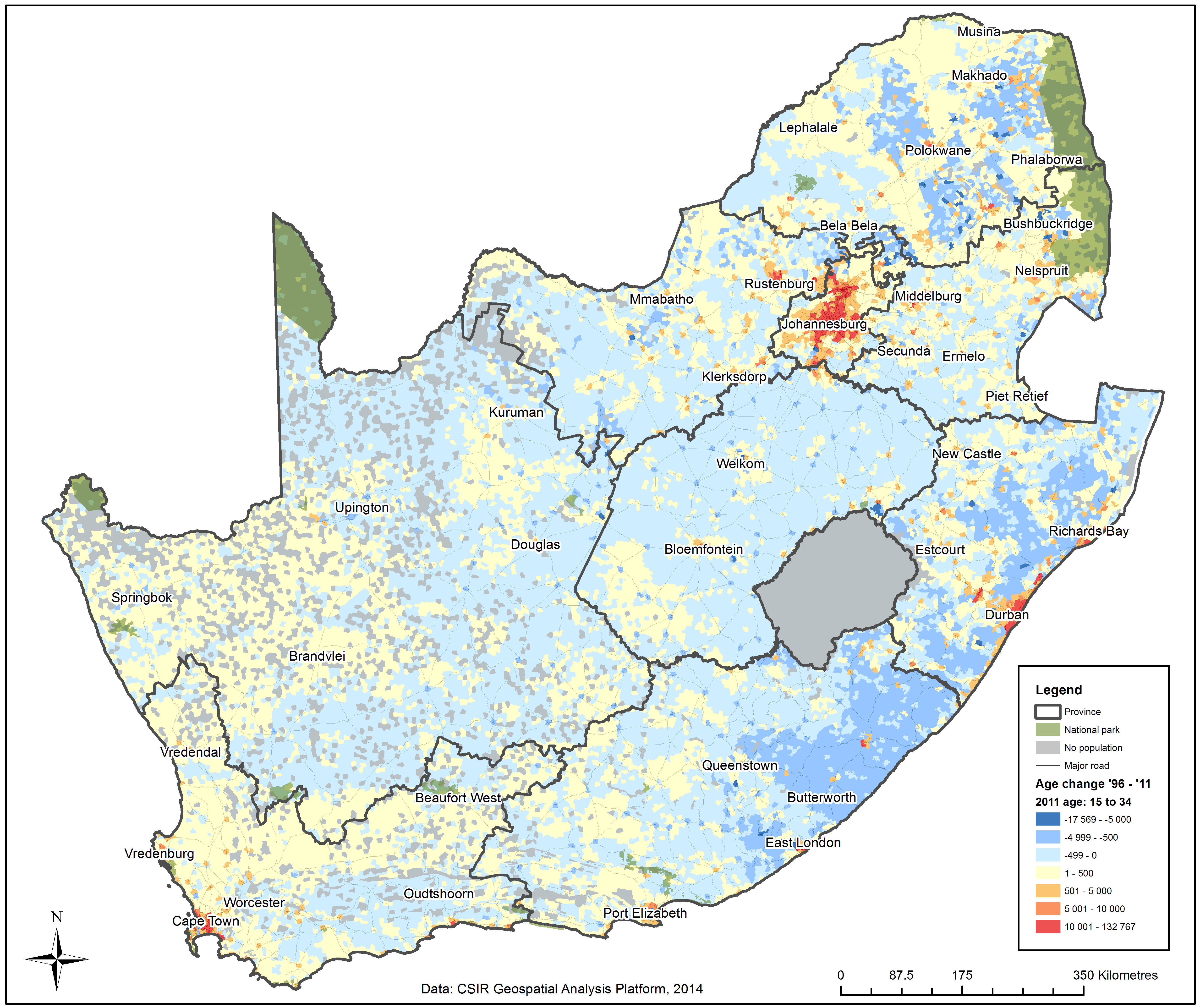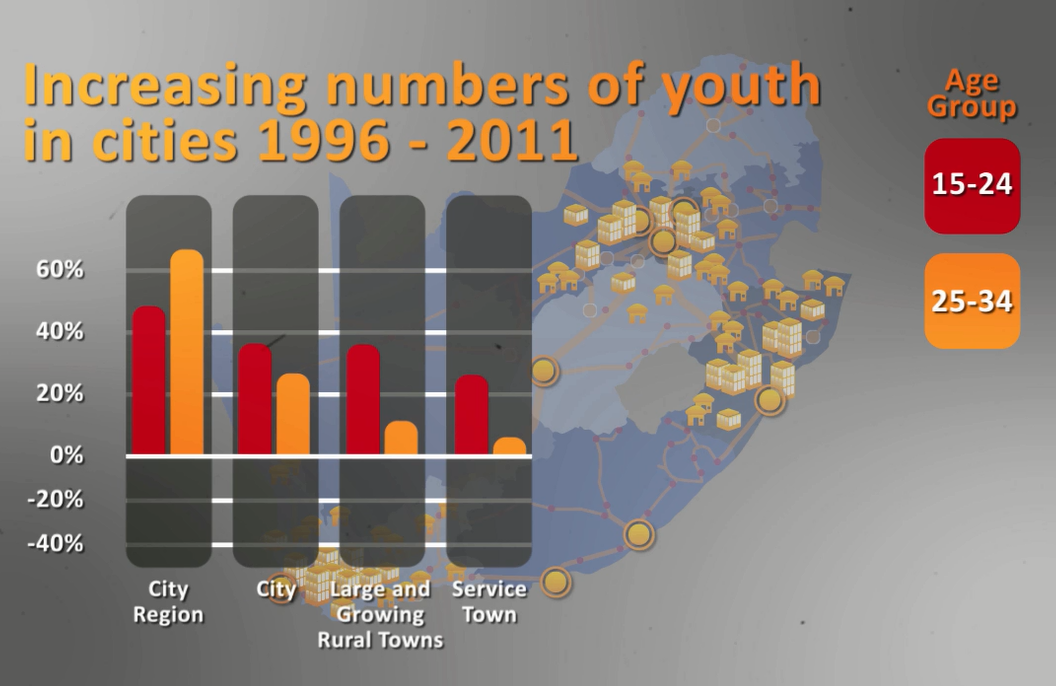Our youth hold the key to future growth and development in South Africa and are also the most mobile of all the age groups. South African youth are primarily moving to and between city regions, cities and large towns. Young people have become more mobile and are not making decisions to migrate only on the availability of jobs but also on the potential access to services and perceived opportunities.
The places in South Africa that attracted young people from 1996 to 2011


As expected, recent comparative analyses conducted by the CSIR confirm that whilst urban areas and towns across South Africa experienced a net growth of population during the 1999 to 2011 time period, rural areas actually experienced a net decline. Population growth during this time was especially high among the younger age cohorts in the city regions. Through the movement of people, urban and rural areas are dynamically interconnected. Read more >>
Through innovative spatial analyses, the CSIR and stepSA team is now able to track spatial as well as temporal patterns of population movement and demographic dynamics in South African cities and settlements. Research on such spatial trends, i.e. regarding changes and movement trends for different age cohorts during the 1996 to 2011 time period, was used as an input for the development of the draft Integrated Urban Development Framework developed by the Department of Co-operative Governance (IUDF). Read more >> The research also formed the basis of key pointers relating to city growth, population movement and climate change presented to the Parliamentary Committee for Co-operative Governance and the IUDF in May 2015 by Sithole Mbanga (SACN) and Elsona van Huyssteen (CSIR). Read more >>
In Gauteng, the number of persons between the ages of 25 and 34 doubled in 15 years. What are the implications of this trend? A paper exploring the population dynamics across South Africa and for the Gauteng city region, presented by Amy Pieterse at the 2014 Planning Africa Conference, provides an insightful summary of these spatial trends. Read more >>
Age cohort shift analysis provides an indication of in- and/or out-migrations by tracking the spatial distribution of a certain category of people from 1996 to 2011. Mesozones, as a spatial unit of analysis, are used to determine the trends in spatial distribution of certain age cohorts. Using the South African typology of settlements, these trends were further categorised by settlement type. Download the following documents to read more about the different methods and background research used to do the above analyses. Read more >>
Core Team:
Amy Pieterse, Elsona van Huyssteen, Johan Maritz, Gerbrand Mans and Willemien van Niekerk
Acknowledgement to contributors and dissemination partners:
- SACN: State of Cities Report, 2015-2016 (Geci Karuri)
- SACN 4th Urban Conference 2015
- SACN & COGTA: Demographic Research Report to support the draft Integrated Urban Development Framework, 2014 (Geci Karuri and Modjadji Malahlela)
For more information contact:
Amy Pieterse,
apieterse@csir.co.za
OR
Elsona van Huyssteen,
evhuyssteen@csir.co.za


